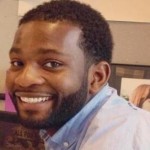As a college student, I remember a great deal of fellow PRSSA members wanting to become entertainment communicators. I mean, how could one not, right? You essentially get paid to read TMZ all day long and tweet about it, which sounds pretty easy.
This is totally not the case.
For the past two years, I have worked as a social media professional over at MTV. While there, I learned three major things PR students should know before pursuing a career in the entertainment industry.
You can’t turn it off
The field of entertainment is nonstop. How celebrities spend their holidays is newsworthy, which means there will always be work during those times. Personally, I enjoyed working on projects like the 12 Days of Jerzmas on Christmas, so it was always a win-win situation in my book. However, understand that while some of your friends are going home to be with loved ones for the holidays, you could be stuck in the office.
Don’t be a super-fan
While we all have our favorite celebrities we would love to meet, in entertainment it’s not cool – at all – to be an overt, super fan. There’s a thin line between being a crazy fan and someone who is familiar with a celebrity’s professional portfolio. One of my PR instructors taught me something that truly helped me prepare to work with celebrities: always act like you have been there before. Acknowledge that you are familiar with their background (some celebs will test your knowledge), but act how you would when meeting any other person.
Name-dropping can be annoying
So, let’s be honest. It is hard not to name drop when you have a really cool entertainment job. In the first few months, the most humble person wouldn’t be able to fight the urge to say, “I work for a cool celebrity or brand.” The reaction you get from everyone else never gets old, but it does get annoying to others … fast. No one is going to do anything for you and not expect something in return. It just doesn’t happen in entertainment. So, if you – the name dropper – get invited to a pretty “cool” party, it’s probably because someone expects your celeb to make an appearance or your media brand to cover it. Keep in mind that sometimes people have their own agenda, but what is within your control is whether or not you will be a part of it.
I truly enjoyed my experience in the entertainment world, but make sure you understand the truths behind common myths before pursuing PR in this industry.
 Kion Sanders is a digital strategist with a strong passion for the entertainment industry. As a digital strategist at MTV, he works with a variety of production companies to drive awareness to several TV-show franchises. Some of his duties involve community management, event planning, developing and executing social marketing strategies.
Kion Sanders is a digital strategist with a strong passion for the entertainment industry. As a digital strategist at MTV, he works with a variety of production companies to drive awareness to several TV-show franchises. Some of his duties involve community management, event planning, developing and executing social marketing strategies.




